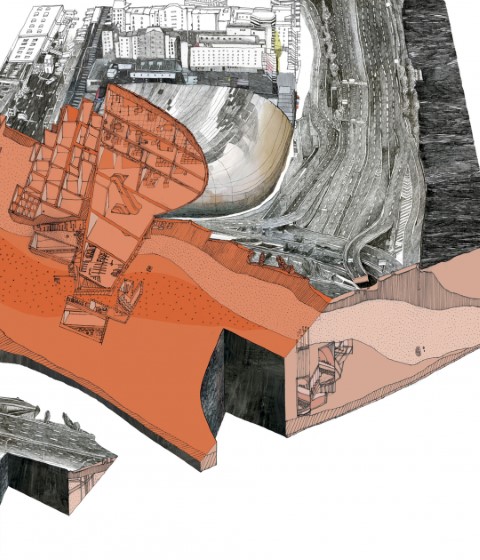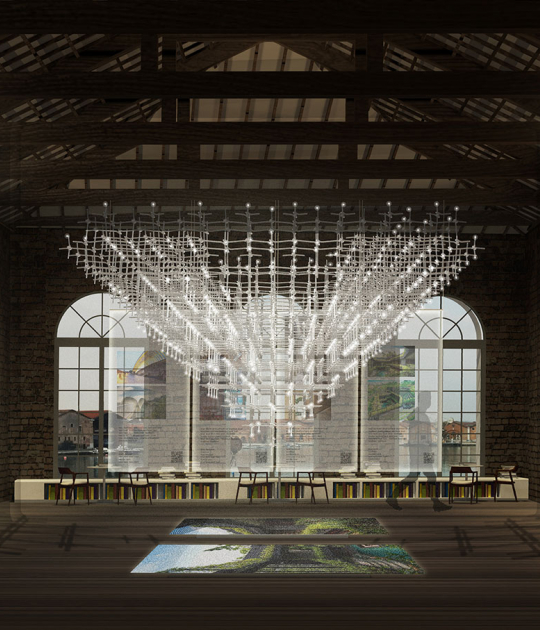Project description by Nicolás Sáez Gutiérrez
Aiwin: A mirror image, The image produced by shadows
Aiwiñ: To see your shadow
Aiwiñ Alewn: To be reflected
Aiwiñ Filtruñ: An image made of smoke
Aiwiñtuwn: To see oneself in one’s own shadow (1)
AIWIÑ, Viewpoint Camera is an Art and Architecture project that reflects on our virtual relation to one another and to the world. It is an inhabitable camera obscura, understood as “Architecture of Image”, being it a construction that, inside, allows perception of the physical phenomena of light, explaining experientially the rise of pre-photographic technical image.
The construction also intends to sensitize the guest to the relationship between image and territory, confronting him, in gradual appearance, to the inverted image of the maritime landscape from Caleta Los Morros located in Tomé’s Coliumo area.
The established predilection of image, of replica, above direct experience with the source, had a start with the instrumentalization of the “camera obscura”. Rooms were transformed or built to produce such an optical phenomenon, within which with only a small perforation (pinhole) the inverted image of the illuminated exterior could be achieved and projected inside a such darkened room.
Original optical mechanism through which the first “seeing machine” was conceived, which in turn originated the first pre-photographic representations. These proto-constructions gave start to a type of Architecture of Image. Rudiment construct that initiated our virtual and mediated relation to the world.
Today experiencing the camera obscura allows us to comprehend the origins of the hyperrealistic image that holds a monopoly on our culture of unthinking consumerism. As a sort of architecture of image, we can achieve a pre photographic experience, previously described by Aristotle, perceived by the naked eye, with no mediator, which not only explains the phenomenon of our vision, but also that of photography, instrument that monopolizes and holds hegemonical power over our way of seeing and recognizing the world.
Building this type of Architecture is an opportunity to create a didactic experience for its visitors about the comprehension of image and the territory that holds it. Thus, its name also allows for the establishment of a link between language (Mapudungun), technique (photography) and territory. Aiwiñ which in Mapudungun means “to see your shadow” is a word that notes self-observation, and is the only word in Mapudungun related to the word “image” which etymologically comes from the Latin imago (a copy, likeness, imitation).
This viewpoint camera invites its visitors to see the illuminated shadow of their own territory as a way of inviting reflection about their conception of landscape… this time as an inverted landscape.
[1] P. ERNESTO WILHELM DE MOESBACH “Vida y costumbres de los indígenas araucanos en la segunda mitad del siglo XIX” . Revista Chilena de Historia y Geografía, 1930. Pág 88 (Visto junio 2017) http://fiestoforo.cl/dungun/pdf/his/Pascual_Cona.pdf

















































